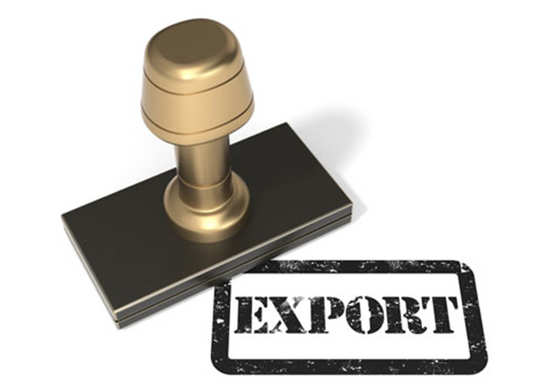
Small businesses looking to increase sales and profit, reduce dependence on the domestic market and stabilize seasonal fluctuations should consider exporting. Consider these facts:
- Nearly 96 percent of consumers live outside the U.S.
- Two-thirds of the world’s purchasing power is in foreign countries.
Today, as noted by Export.gov, it’s easier than ever for a company like yours, regardless of size, to sell goods and services across the globe. Small and medium-sized companies in the United States are exporting more than ever before.
In 2013, for example, more than 300,000 small and medium-sized U.S. companies exported to at least one international market—nearly 28 percent more than in 2005. The value of goods and services exports was an impressive $2.28 trillion, nearly a 25 percent increase since 2010. And 2014 topped the previous year, with exports valued at $2.34 trillion.
The following list is of sales channels are available to global trading partners active in the export process,
Sales channels can include:
- Direct to end-user
- Distributors in country
- Supplier to the U.S. government in a foreign country
- Your e-commerce website
- A third-party e-commerce platform where you handle fulfillment
- A third-party e-commerce where they handle fulfillment
- Supplier to a large U.S. company with international sale
- Franchise your business.
You are not limited to one of these channels. As it is also noted in the Export.gov study, today’s global trading system is ideal for the smaller company employing more than one marketing and sales channel to sell into multiple overseas markets. But most U.S. exporters currently sell to one country market—Canada, for example. And the smaller the company, the less likely it is to export to more than one country. For example, 60 percent of all exporters with fewer than 19 employees sold to one country market in 2005.
Tips For Potential And New Exporters
In a recent report from Shipping Solutions, these seven tips will provide helpful guidance for businesses new to exporting:
Tip #1 – Make a Commitment
Businesses new to exporting can expect to face numerous challenges such as redesigning packaging or establishing a new distribution channel.
Tip #2 – Do Your Research
To be successful overseas, do some research on potential markets. Which countries have the lowest duties? Write an international marketing plan, which addresses a range of potential issues such as unique labeling requirements.
Tip #3 – Focus Your Efforts
For example, first-time exporters in Minnesota often target Canada as the first international market to enter. The proximity of Canada and the benefits of the reduced North American Free Trade Agreement (NAFTA) tariffs are advantageous for new Minnesota exporters ramping up on their export knowledge.
Tip #4 – Set Aside Resources
Entering new markets requires resources—primarily time and money. Companies in the best position to export already have an established track record of domestic growth and a steady revenue stream. For many companies, gearing up a business to export means having to reallocate resources from domestic business opportunities.
Tip #5 – Increase Your Company’s Export Knowledge
Look for opportunities to develop and expand the export knowledge of your staff. Work toward credentials to ensure you develop a baseline of skills. For exporting companies, encourage staff to attain the Certified Global Business Professional credential.
Tip #6 – Line Up Experts
It's unlikely that one person will know all aspects of the export process in full detail. As you prepare to export, establish a network of specialists with expertise across a range of issues such as export documentation, letters of credit, or international contracts.
Tip #7 – Leverage Government Resources
The U.S. Commercial Service, which has Export Assistance Centers located across the U.S. and offices in many American Embassies and Consulates overseas, is a global network of trade professionals who can provide ground support in many overseas markets to assist U.S. exporters.
The Small Business Administration (“SBA”) has published through its website at several useful tools to help get started with exporting. Note the following:
Step 1: Complete the Free Export Preparedness Questionnaire
Determine your business’s preparedness for exporting and find useful info about exporting that can help grow your exporting business.
Step 2: Training and Counseling
The federal government offers free, in-person counseling services to help small businesses locate business opportunities overseas, understand shipping logistics and international payment options, and obtain financing for their export sales.
Step 3: Create an Export Business Plan
Creating an export business plan is important for defining your company’s present status, internal goals and commitment. You will learn how to develop an export plan by assembling facts, identifying constraints and setting specific goals and objectives as milestones to success.
Step 4: Conduct Market Research
Use Market Research to learn your product’s potential in a given market, where the best prospects exist for success, and common business practices. The Country Commercial Guides are the latest information prepared by commercial and economic experts in U.S. embassies worldwide.
Step 5: Find Buyers
Federal, state and local governments are continually organizing highly focused export events directly putting U.S. sellers and potential foreign buyers in direct contact.
Step 6: Investigate Financing Your Small Business Exports, Foreign Investment or Projects
Become familiar with SBA’s export loan programs and other federal government financing, insurance and grant programs.
Conclusion:
Experience has shown that increased revenues and profits vis-a-vis an exporting business strategy can become a living reality by applying critical preparation and planning.
